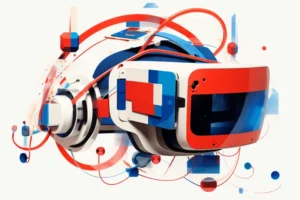Have you considered the worst potential biases in your data collection process?

Data collection
Data collection es very important. Is the process of collecting and measuring information on established variables in a systematic way, which allows obtaining relevant answers, testing hypotheses and evaluating results. Data collection in the research process is common to all fields of study.
Research bias
Data collection process is very important. In a purely objective world, bias in research would not exist because knowledge would be a fixed and immovable resource; Either you know about a specific concept or phenomenon, or you don’t know. However, both qualitative research and the social sciences recognize that subjectivity and bias exist in all aspects of the social world, which naturally includes the research process as well. This bias manifests itself in the different ways in which knowledge is understood, constructed and negotiated, both within and outside of research.

Understanding research bias has profound implications for data collection and analysis methods, as it requires researchers to pay close attention to how to account for the insights generated from their data.
What is research bias?
Research bias, often unavoidable, is a systematic error that can be introduced at any stage of the research process, biasing our understanding and interpretation of the results. From data collection to analysis, interpretation, and even publication, bias can distort the truth we aim to capture and communicate in our research.
It is also important to distinguish between bias and subjectivity, especially in qualitative research. Most qualitative methodologies are based on epistemological and ontological assumptions that there is no fixed or objective world “out there” that can be measured and understood empirically through research.
In contrast, many qualitative researchers accept the socially constructed nature of our reality and therefore recognize that all data is produced within a particular context by participants with their own perspectives and interpretations. Furthermore, the researcher’s own subjective experiences inevitably determine the meaning he or she gives to the data.
These subjectivities are considered strengths, not limitations, of qualitative research approaches, because they open new avenues for the generation of knowledge. That is why reflexivity is so important in qualitative research. On the other hand, when we talk about bias in this guide, we are referring to systematic errors that can negatively affect the research process, but that can be mitigated through careful effort on the part of researchers.
To fully understand what bias is in research, it is essential to understand the dual nature of bias. Bias is not inherently bad. It is simply a tendency, inclination or prejudice for or against something. In our daily lives, we are subject to countless biases, many of which are unconscious. They help us navigate the world, make quick decisions, and understand complex situations. But when we investigate, these same biases can cause major problems.
Bias in research can affect the validity and credibility of research results and lead to erroneous conclusions. It may arise from the subconscious preferences of the researcher or from the methodological design of the study itself. For example, if a researcher unconsciously favors a particular study outcome, this preference could affect how he or she interprets the results, leading to a type of bias known as confirmation bias.
Research bias can also arise due to the characteristics of the study participants. If the researcher selectively recruits participants who are more likely to produce the desired results, selection bias may occur.
Another form of bias can arise from data collection methods. If a survey question is phrased in a way that encourages a particular response, response bias can be introduced. Additionally, inappropriate survey questions can have a detrimental effect on future research if the general population considers those studies to be biased toward certain outcomes based on the researcher’s preferences.
What is an example of bias in research?
Bias can appear in many ways. An example is confirmation bias, in which the researcher has a preconceived explanation for what is happening in his or her data and (unconsciously) ignores any evidence that does not confirm it. For example, a researcher conducting a study on daily exercise habits might be inclined to conclude that meditation practices lead to greater commitment to exercise because she has personally experienced these benefits. However, conducting rigorous research involves systematically evaluating all the data and verifying one’s conclusions by checking both supporting and disconfirming evidence.

What is a common bias in research?
Confirmation bias is one of the most common forms of bias in research. It occurs when researchers unconsciously focus on data that supports their ideas while ignoring or undervaluing data that contradicts them. This bias can lead researchers to erroneously confirm their theories, despite insufficient or contradictory evidence.
What are the different types of bias?
There are several types of bias in research, each of which presents unique challenges. Some of the most common are
– Confirmation bias: As already mentioned, it occurs when a researcher focuses on evidence that supports his or her theory and ignores evidence that contradicts it.
– Selection bias: Occurs when the researcher’s method of choosing participants biases the sample in a certain direction.
– Response bias: Occurs when participants in a study respond inaccurately or falsely, often due to misleading or poorly formulated questions.
– Observer bias (or researcher bias): Occurs when the researcher unintentionally influences the results due to their expectations or preferences.
– Publication bias: This type of bias arises when studies with positive results are more likely to be published, while studies with negative or null results are usually ignored.
– Analysis bias: This type of bias occurs when data is manipulated or analyzed in a way that leads to a certain result, whether intentionally or unintentionally.

What is an example of researcher bias?
Researcher bias, also known as observer bias, can occur when a researcher’s personal expectations or beliefs influence the results of a study. For example, if a researcher believes that a certain therapy is effective, she may unconsciously interpret ambiguous results in ways that support the therapy’s effectiveness, even though the evidence is not strong enough.
Not even quantitative research methodologies are immune to researcher bias. Market research surveys or clinical trial research, for example, may encounter bias when the researcher chooses a particular population or methodology to achieve a specific research result. Questions in customer opinion surveys whose data are used in quantitative analysis may be structured in such a way as to bias respondents toward certain desired responses.
How to avoid bias in research?
Although it is almost impossible to completely eliminate bias in research, it is crucial to mitigate its impact to the extent possible. By employing thoughtful strategies in each phase of research, we can strive for rigor and transparency, improving the quality of our conclusions. This section will delve into specific strategies to avoid bias.
How do you know if the research is biased?
Determining whether research is biased involves a careful review of the research design, data collection, analysis, and interpretation. You may need to critically reflect on your own biases and expectations and how they may have influenced your research. External peer reviews can also be useful in detecting potential bias.
Mitigate bias in data analysis
During data analysis, it is essential to maintain a high level of rigor. This may involve the use of systematic coding schemes in qualitative research or appropriate statistical tests in quantitative research. Periodically questioning interpretations and considering alternative explanations can help reduce bias. Peer debriefing, in which analysis and interpretations are discussed with colleagues, can also be a valuable strategy.
By using these strategies, researchers can significantly reduce the impact of bias in their research, improving the quality and credibility of their findings and contributing to a more robust and meaningful body of knowledge.
Impact of cultural bias in research
Cultural bias is the tendency to interpret and judge phenomena according to criteria inherent to one’s own culture. Given the increasingly multicultural and global nature of research, understanding and addressing cultural bias is paramount. This section will explore the concept of cultural bias, its implications for research, and strategies to mitigate it.
Bias and subjectivity in research
Keep in mind that bias is a force to be mitigated, not a phenomenon that can be completely eliminated, and each person’s subjectivities are what make our world so complex and interesting. As things continually change and adapt, research knowledge is also continually updated as we develop our understanding of the world around us.
Why is data collection so important?
Collecting customer data is key to almost any marketing strategy. Without data, you are marketing blindly, simply hoping to reach your target audience. Many companies collect data digitally, but don’t know how to leverage what they have.
Data collection allows you to store and analyze important information about current and potential customers. Collecting this information can also save businesses money by creating a customer database for future marketing and retargeting efforts. A “wide net” is no longer necessary to reach potential consumers within the target audience. We can focus marketing efforts and invest in those with the highest probability of sale.
Unlike in-person data collection, digital data collection allows for much larger samples and improves data reliability. It costs less and is faster than in-person data, and eliminates any potential bias or human error from the data collected.

